Rice farming in Farming Simulator introduces players to a unique and detailed aspect of agricultural management. Unlike other crops, rice requires careful planning and specific environmental conditions to thrive, adding an additional layer of strategy to the game. Players must prepare their fields, manage water levels, and time their harvests precisely to ensure a successful yield. With its distinct growing process and the need for specialized equipment, rice farming offers a refreshing challenge for both veteran players and newcomers alike. As you immerse yourself in the world of virtual farming, rice cultivation becomes a critical and satisfying aspect of your agricultural journey.
Brief Overview of Rice as a Crop
Rice is one of the most widely grown and consumed crops in the world, known for its versatility and nutritional value. In FS25, rice is represented as a crop that requires specific growing conditions, such as flooded fields, which mimic the real-life paddies where rice is traditionally cultivated. The crop is sown in prepared fields and demands diligent water management throughout its growth cycle. As it matures, rice transforms from delicate seedlings into golden grains ready for harvest. This crop’s inclusion in the game not only adds variety to the types of farming players can engage in but also introduces them to the complexities of managing a crop that is central to global food security.
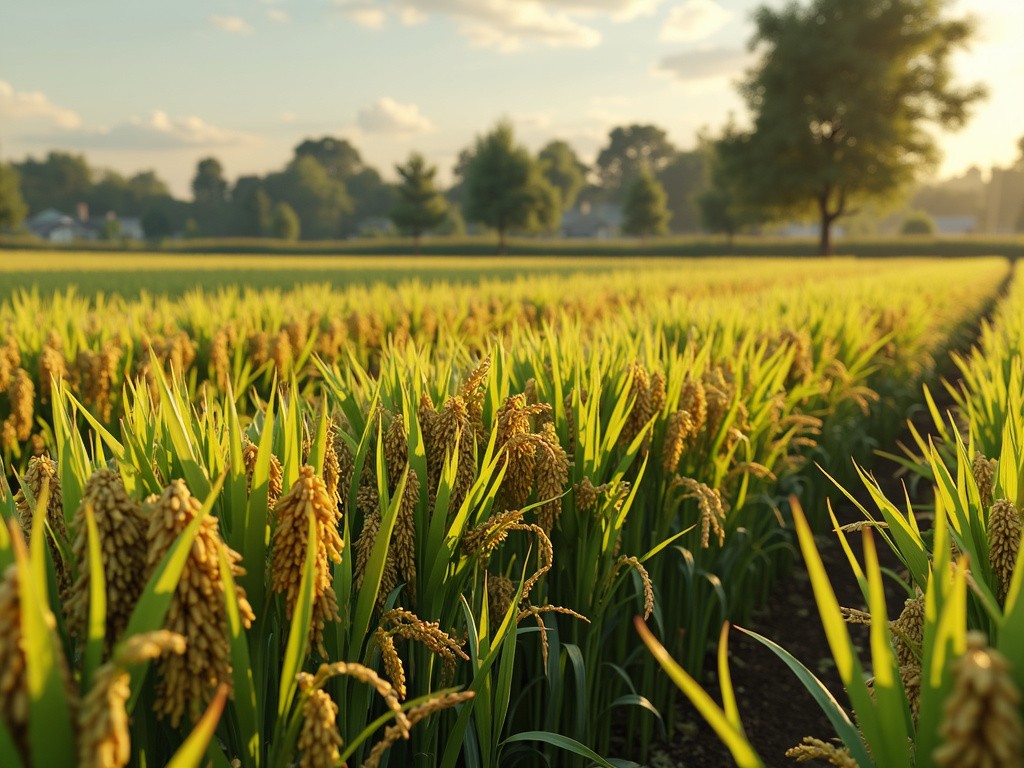
Importance in the Game’s Economy
In Farming Simulator, rice plays a crucial role in the virtual economy, offering players a profitable opportunity if managed correctly. Due to its labor-intensive cultivation process and the need for specific growing conditions, rice can yield higher profits compared to other crops. Players who invest in rice farming can diversify their income streams and take advantage of market fluctuations to maximize their earnings. Additionally, with the introduction of rice, the game’s economy becomes more dynamic, as players must balance the costs of water management and specialized equipment against the potential revenue from a successful harvest. As a result, mastering rice farming not only boosts your farm’s profitability but also enriches the overall gameplay experience by adding depth and complexity to the economic system.
Preparing for Rice Cultivation
Before you can start planting rice in Farming Simulator, thorough preparation is essential to ensure a successful harvest. Rice cultivation requires specialized equipment and specific field conditions that differ from those used for other crops. Proper planning and setup are crucial, as the crop’s unique needs must be met to maximize yield and profitability. From selecting the right machinery to choosing the best fields, understanding the preparation process is the first step toward becoming a successful rice farmer in the game.
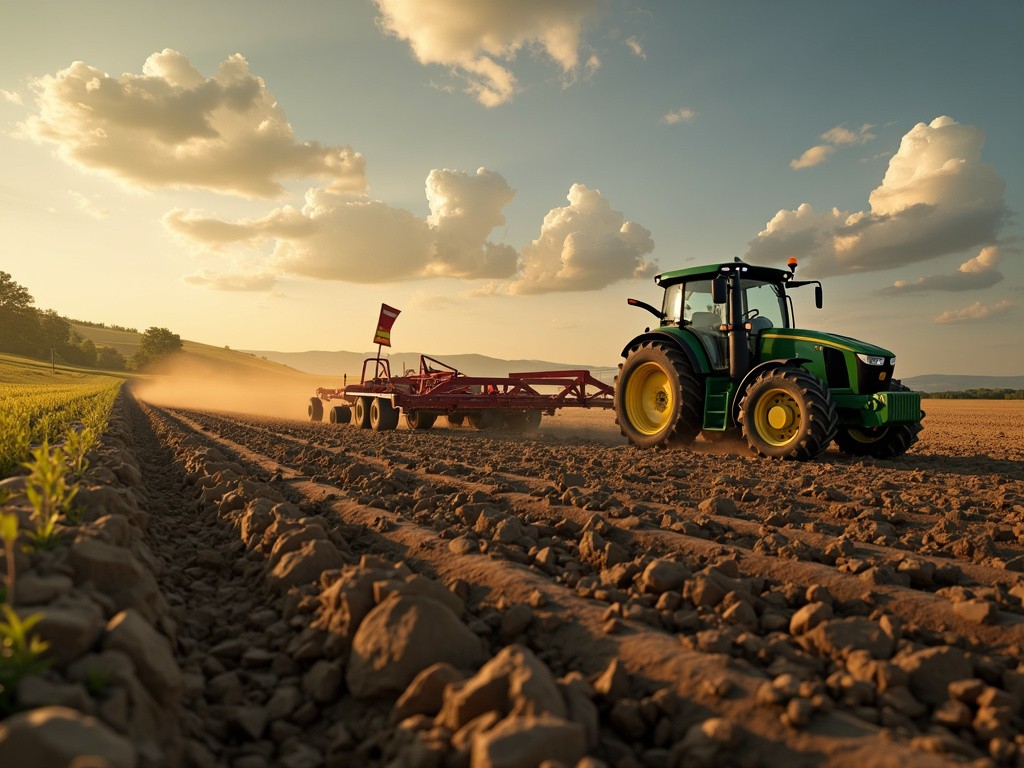
Required Equipment
Rice farming in Farming Simulator demands a range of specialized equipment that is tailored to the unique requirements of this crop. The first piece of equipment you’ll need is a rice planter, designed to sow the seeds in the prepared, flooded fields. Additionally, a harvester equipped with a rice header is necessary to efficiently collect the mature crop. Players may also need to invest in levee plows or other tools that manage water levels and field boundaries, ensuring that the rice paddies maintain the correct moisture levels throughout the growing season. Properly equipping your farm with these tools is crucial to maintaining efficiency and maximizing the productivity of your rice fields.
Suitable Fields and Terrain
Selecting the right fields for rice cultivation is a critical decision that can significantly impact your success in Farming Simulator. Rice thrives in flat, low-lying terrain where the fields can be easily flooded and drained. These fields must be prepared to hold water effectively, as consistent moisture is essential for rice growth. Soil quality also plays a role, with loamy or clay soils often being more suitable for retaining water. Additionally, proximity to water sources is important, as it will simplify the process of flooding and draining your rice paddies. Choosing suitable fields and preparing the terrain properly are key steps in ensuring that your rice farming endeavors are both efficient and profitable.
Planting Rice
Rice planting is a pivotal phase in the cultivation process, requiring careful attention to timing and techniques to ensure a bountiful harvest. Unlike some other crops, rice has specific needs when it comes to soil preparation, seeding, and seasonal conditions. Understanding these requirements is essential for maximizing yield and ensuring that your rice fields thrive throughout the growing season. Below, we explore the optimal planting seasons, soil preparation techniques, and the seeding process for rice in Farming Simulator.
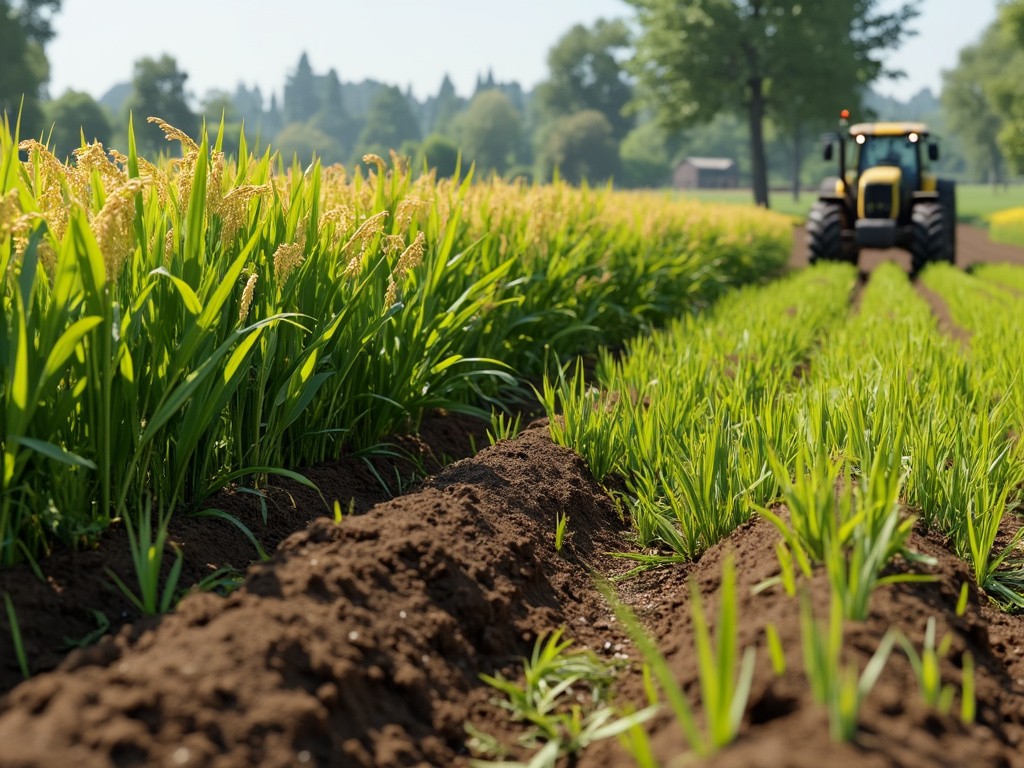
Optimal Planting Seasons
In Farming Simulator 25, timing your rice planting is crucial to achieving the best possible yield. Rice typically thrives in warmer weather, meaning that late spring to early summer is the ideal planting window. This timing allows the crop to benefit from the long, warm days and consistent moisture levels it needs to grow effectively. Planting too early or too late in the season can result in poor germination and reduced yields. Players must pay close attention to the in-game calendar and weather forecasts to ensure they plant their rice during the optimal season, giving their crop the best chance to mature before the onset of cooler weather.
Soil Preparation Techniques
Preparing the soil for rice cultivation is a multi-step process that involves more than just tilling the land. Given that rice grows best in flooded fields, the preparation begins with leveling the field to ensure even water distribution. Players should use a levee plow or similar equipment to create boundaries around the field, allowing for controlled flooding. After leveling, the soil is typically tilled to break up any clumps and to create a fine, even seedbed. Some players may also choose to apply a layer of organic or chemical fertilizer during this phase to enrich the soil and promote healthier crop growth. Effective soil preparation is vital for maintaining the right growing conditions and ensuring that your rice plants can establish strong roots.
Seeding Process
Once the soil is prepared and the fields are adequately flooded, it’s time to plant the rice seeds. In Farming Simulator, this is done using a rice planter, a specialized piece of equipment that sows the seeds directly into the flooded fields. The seeding process requires precision, as even distribution of seeds is key to achieving a uniform crop. The depth at which the seeds are planted is also important; they should be shallow enough to sprout quickly but deep enough to anchor the plants securely as they grow. After seeding, maintaining the correct water level in the fields is essential to protect the young plants from drought stress and promote vigorous growth. Proper management during this stage sets the foundation for a healthy and productive rice crop.
Maintaining Rice Fields
Once the rice is planted, the work is far from over. Proper maintenance of your rice fields is crucial to ensuring a healthy and abundant harvest. This involves managing water levels, applying fertilizers at the right times, and keeping weeds at bay. Each of these tasks requires careful attention and timely execution to help your rice crop reach its full potential.
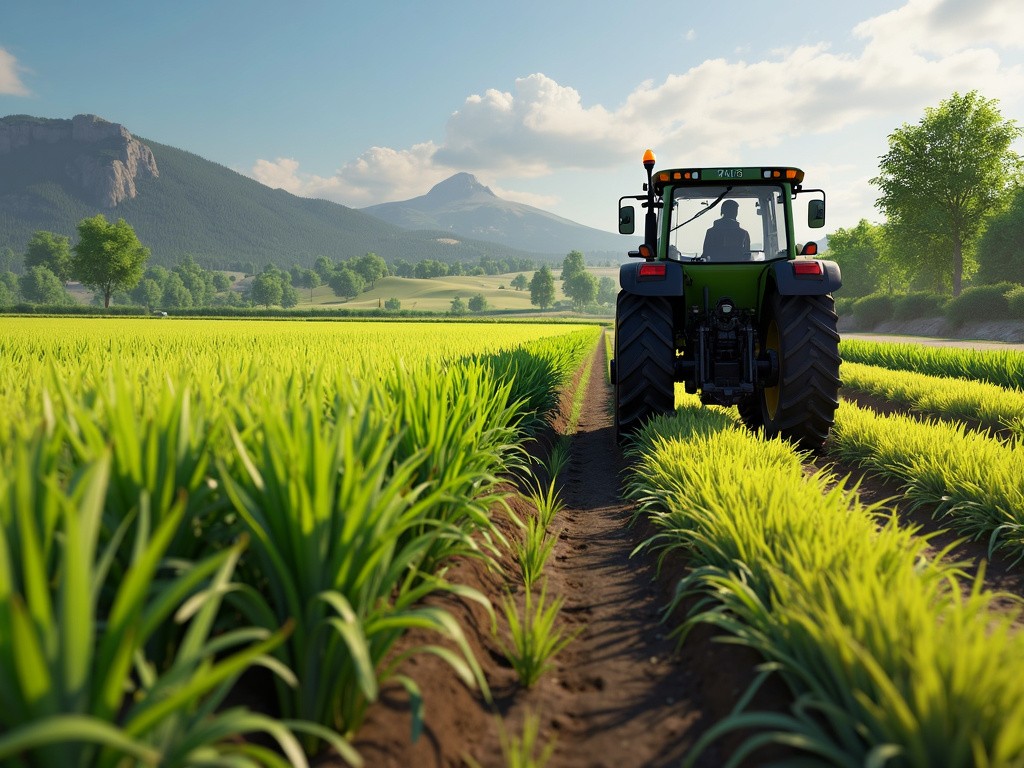
Water Management
Water management is perhaps the most critical aspect of rice farming. Rice fields must be kept flooded for much of the growing season to provide the plants with the moisture they need. In Farming Simulator, this means regularly monitoring and adjusting water levels to ensure they remain consistent. Too much water can lead to root rot, while too little can stress the plants and reduce yields. As the rice begins to mature, the water levels should be gradually reduced to allow the fields to dry out before harvest. Proper water management is not just about keeping the fields wet—it’s about finding the perfect balance to keep your rice thriving.
Fertilization Strategies
Fertilizing your rice fields at the right times can greatly enhance your crop’s growth and final yield. Early in the growing season, applying a nitrogen-rich fertilizer can boost the development of the rice plants, leading to stronger, healthier growth. As the plants mature, a balanced fertilizer can help sustain their growth and prepare them for a fruitful harvest. In Farming Simulator 25, timing your fertilizer applications to coincide with key growth stages is essential for maximizing the productivity of your rice fields.
Weed Control
Weeds can be a significant problem in rice fields, competing with your crops for nutrients, water, and sunlight. Effective weed control is necessary to ensure that your rice plants have the resources they need to grow. In FS25, this might involve using herbicides or manual weeding to keep the fields clear. Regularly checking your fields for weed growth and taking prompt action is critical to maintaining a healthy crop. Neglecting weed control can lead to reduced yields and lower-quality rice, so it’s important to stay vigilant throughout the growing season.
Harvesting Rice
Harvesting is the culmination of all your hard work in rice farming, and getting it right is crucial to ensuring the quality and quantity of your yield. Knowing when to harvest and using the appropriate equipment and techniques can make the difference between a successful season and a disappointing one.
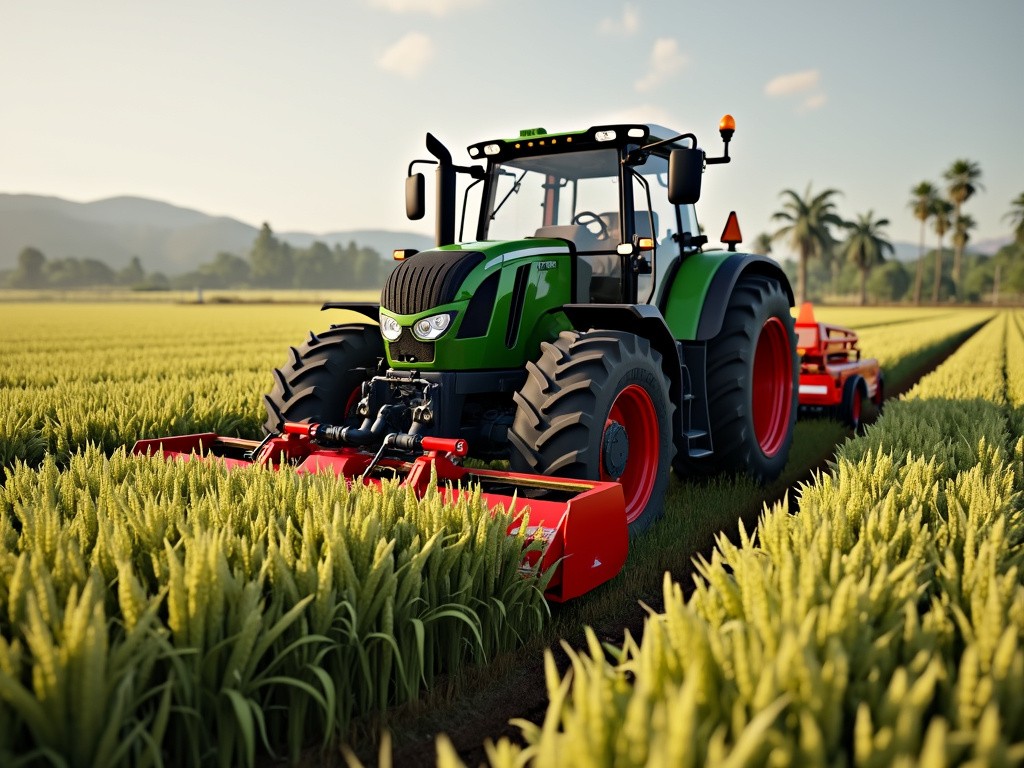
Identifying the Right Time to Harvest
Timing is everything when it comes to harvesting rice. The key is to wait until the rice plants have reached full maturity, which is typically indicated by the grains turning golden and the stalks beginning to droop. In Farming Simulator, this stage usually occurs a few days after the plants have fully ripened, and it’s essential to harvest before any adverse weather conditions, like rain, that could damage the crop. Harvesting too early can result in immature grains that are lower in quality, while waiting too long can lead to shattering, where the grains fall from the stalks, reducing your overall yield. Careful observation and timely action are vital to ensure a bountiful harvest.
Harvesting Equipment and Techniques
For harvesting rice, you’ll need a combine harvester equipped with a specialized rice header. This equipment is designed to efficiently cut the rice stalks and separate the grains from the chaff in one streamlined process. In Farming Simulator, operating the harvester smoothly across your fields will ensure minimal waste and maximum collection of the grains. It’s also important to consider the moisture content of the rice; harvesting when the grains are too wet can lead to difficulties in storage and processing. Once harvested, the rice can be stored or sold, depending on your strategy. Properly using the right equipment and techniques ensures not only the efficiency of the harvest but also the quality of the rice you bring in, directly impacting your farm’s profitability.
Post-Harvest Processing
After the rice has been successfully harvested, the next crucial steps involve processing the grains to ensure they are ready for storage or sale. Proper post-harvest processing can significantly impact the quality of your rice and, consequently, the profit you can achieve. This stage includes drying the rice to the correct moisture level and making strategic decisions about when and where to sell your crop.
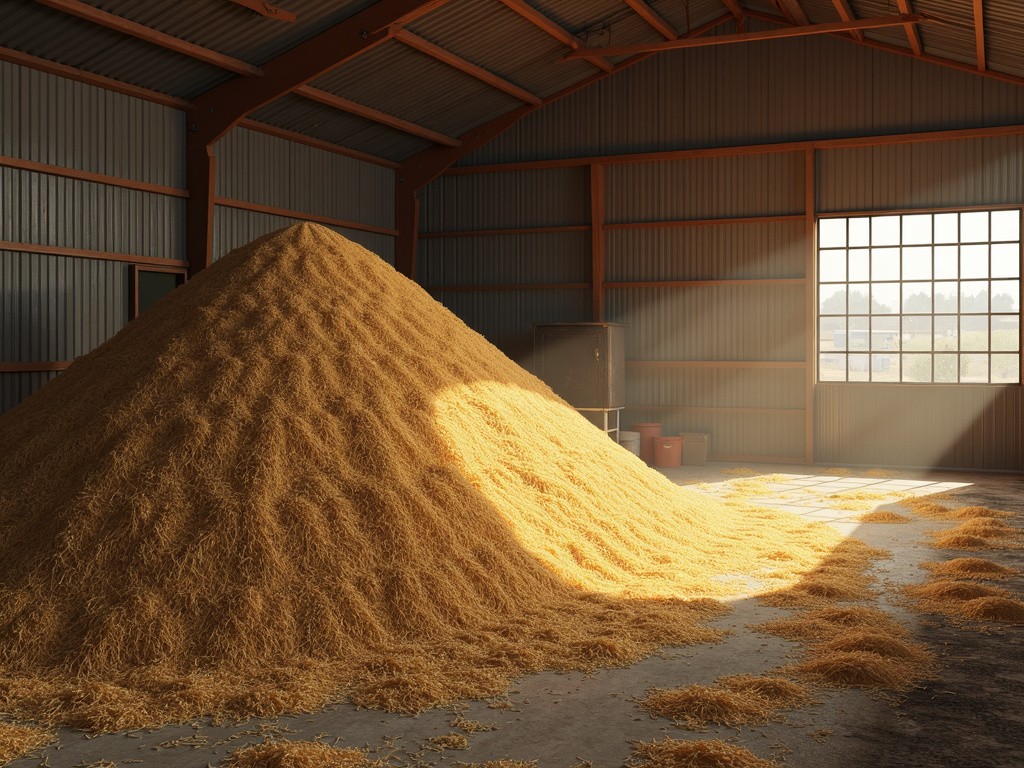
Drying and Storage
Drying is one of the most important post-harvest tasks in rice farming. Immediately after harvest, rice grains contain a high moisture content, which must be reduced to prevent spoilage during storage. In Farming Simulator, this usually means allowing the grains to air-dry for a certain period or using mechanical dryers if available. The target moisture level for safe storage is around 12-14%. Once dried, the rice can be stored in silos or other suitable storage facilities. Proper storage conditions, such as maintaining a cool, dry environment, are essential to preserve the quality of the rice and prevent issues like mold or pests. Managing this process effectively ensures that your rice remains in prime condition until you’re ready to sell.
Selling Strategies for Maximum Profit
Once your rice is dried and stored, the next step is to strategize for selling it to maximize your profit. In Farming Simulator 25, market prices for rice can fluctuate based on supply and demand, so timing your sale is key. You might choose to sell immediately if prices are high, or you could store the rice and wait for a better market opportunity. Additionally, consider selling your rice to different buyers, such as local markets, export companies, or even processing plants that may offer a premium price for high-quality grains. Some players might also explore contracts or bulk sales, which can provide stable income but might lock in prices that could fluctuate in your favor later. By carefully analyzing the market and choosing the right time and place to sell, you can significantly boost your farm’s profitability.
For the end

Rice farming is a rewarding and intricate process that adds depth and variety to your agricultural endeavors. From carefully preparing your fields and managing water levels to timing your harvest and strategizing your sales, each step plays a crucial role in ensuring a successful yield. By mastering these elements, you can enjoy not only the satisfaction of growing a globally significant crop but also the potential for substantial in-game profits.
If you haven’t tried rice farming yet, now is the perfect time to dive in. The challenge of cultivating rice brings a new level of strategy and engagement to your virtual farm, offering a unique experience that contrasts with other types of farming. Whether you’re a seasoned player or new to the series, rice farming provides an opportunity to expand your skills and explore a different side of farming life. Additionally, be sure to check out FS25 mods that can enhance your rice farming experience with new equipment, improved mechanics, and even custom maps designed specifically for rice cultivation. So, get your equipment ready, prepare your fields, and start your journey into the world of rice cultivation!
What will be product line from rice?
Today there is no official information about product lines in upcoming Farming Simulator 25